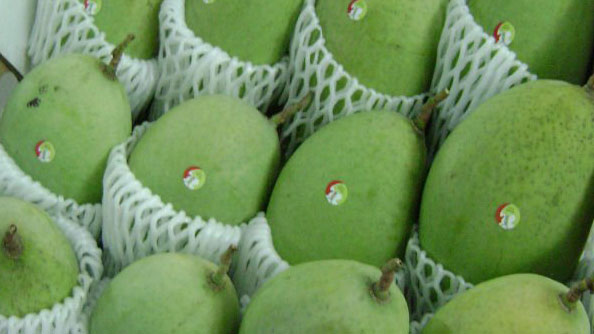New Zealand: opportunity for Vietnamese products
Opening opportunity for fruit exports
The MPI says a review of the importation has found that the risks associated with diseases can be managed to achieve New Zealand’s appropriate level of quarantine protection and is effective as from April 24.
In addition to the common requirements for fresh fruits imported to New Zealand, dragon fruits must obtain a certificate from the National Plant Protection Organisations (NPPO) to be shipped to the country.
On May 1, the MPI also modified regulations concerning the importation of Vietnamese mango – another tropical fruit which has been a favourite with NZ consumers since December 2011.
Experts hope the two types of fruits will help Vietnam get its foot in the door, opening opportunities for other Vietnamese fruits to be allowed into the market.
 |
Vietnam and New Zealand have signed a number of agreements aimed at creating a legal framework for increased trade and cooperation. They also established a joint committee in 2005 in hopes of spurring trade.
However, bilateral trade remains modest, but bright spots on the horizon are beginning to appear. Thanks to trade promotions over the years, two-way trade turnover rose from US$187 million in 2001 to US$750 million in 2012 and US$723 million in 2013.
In the first four months of this year, Vietnam’s exports to New Zealand hit a record high of US$90 million, spawning optimism that bilateral trade could reach US$1 billion by the end of 2015.
Vietnam is currently the 21st largest exporter of New Zealand with its main export products including footwear, wood and timber products, seafood, garment and cashew nuts. The country primarily imports milk and dairy products from New Zealand.
Studying market trends
Since the ASEAN-Australia-New Zealand Free Trade Agreement (AANZFTA) took effect in January 2010, Vietnamese products have received significant incentives in the New Zealand market.
However, many domestic businesses have not carefully studied the trade pact to take full advantage of the incentives it offers, including highly reduced tariffs among other things.
 |
The New Zealand economy depends highly on processing farm products, minerals and fisheries, which are quite similar to Vietnam. Thus, it is difficult for Vietnamese products to penetrate the market, but not impossible.
New Zealand applies open-door and flexible trade policies highly conducive to Vietnamese exports with high diversity sufficient to bolster robust trade and economic relations.
In the reverse, AANZFTA also provides ample opportunity for New Zealand businesses to penetrate the Vietnamese marketplace. For example, Vietnam pledges to eliminate 54% of tariffs on New Zealand imports in 2016, 85% in 2018 and 90% in 2020.
Specifically, pursuant to the agreement, beef, lamp, dairy products and small plank will enjoy significant tariff cuts in 2016. It is highly likely that imports from New Zealand into Vietnam will rise considerably in 2016 and the years beyond.
Economists forecast Vietnam’s annual import growth from the New Zealand market will grow by around 5% to NZD12.5 billion over the next few years.
This underscores the need of Vietnamese businesses to study New Zealand’s market trends, and trade pacts, and seek to capitalise on the importation of Vietnamese dragon fruits and mangos, using them as a springboard to launch the importation of other high quality Made in Vietnam products to New Zealand.
What the stars mean:
★ Poor ★ ★ Promising ★★★ Good ★★★★ Very good ★★★★★ Exceptional
Latest News
More News
- Businesses ramp up production as year-end orders surge (December 30, 2025 | 10:05)
- Vietjet chairwoman awarded Labour Hero title (December 29, 2025 | 13:06)
- How to unlock ESG value through green innovation (December 29, 2025 | 10:03)
- AI reshapes media and advertising industry (December 29, 2025 | 08:33)
- FPT and GELEX sign deal to develop blockchain tech for global markets (December 29, 2025 | 08:29)
- Vietnam’s GDP forecast to grow by 9 per cent in 2026 (December 29, 2025 | 08:29)
- Women entrepreneurs are key to Vietnam’s economic growth (December 29, 2025 | 08:00)
- Vietnam's top 500 value-creating enterprises announced (December 27, 2025 | 08:00)
- The PAN Group shaping a better future with ESG strategy (December 26, 2025 | 09:00)
- Masan Consumer officially lists on HSX, marking the next phase of value creation (December 25, 2025 | 13:20)

















 Mobile Version
Mobile Version